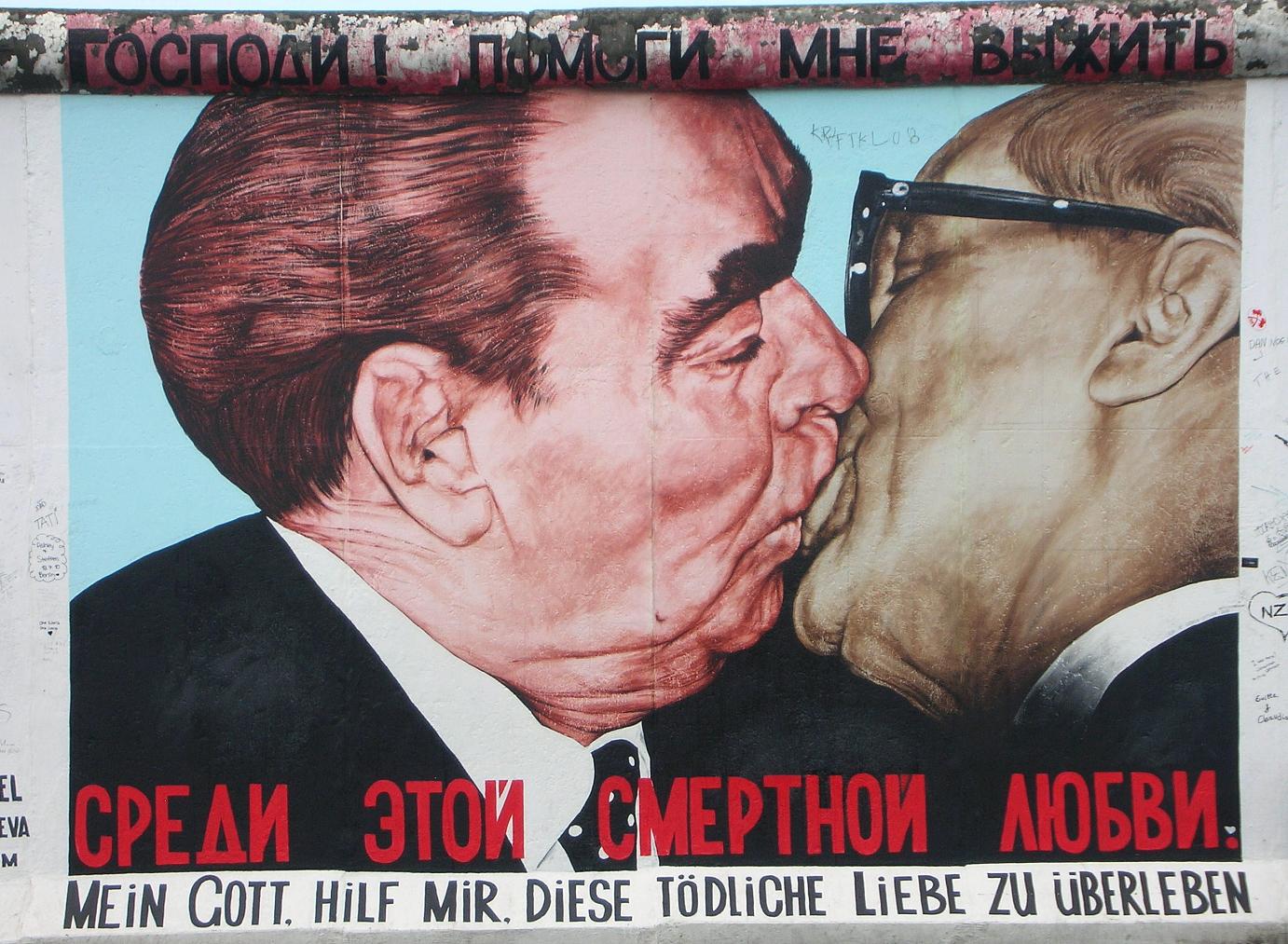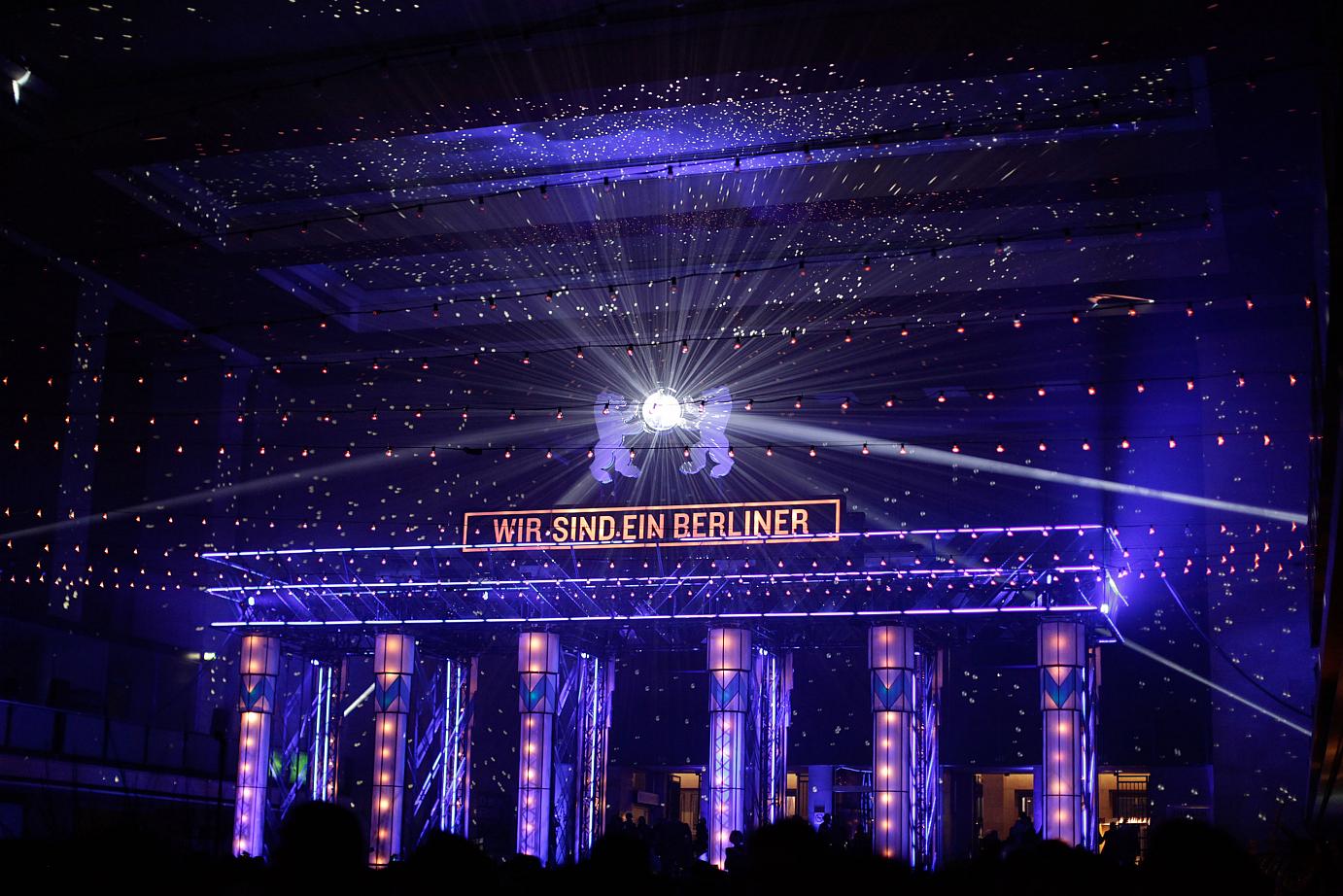From 1961 to 1989 Berlin, divided into East and West since 1945, was scarred with an invincible concrete wall topped with multiple rolls of impenetrable barbed wire. Armed Vopos, the East German ‘people’s’ policemen equipped with a licence to kill, controlled from their watchtowers the so-called ‘death strip’ passing between the two Germanies; none of the GDR’s involuntary citizens were to escape the socialist paradise imposed on them. Inhabitants of West Berlin belonging to the Federal Republic were better off – and seemingly unimpressed by their severed freedom. Although fenced in, neither their positive attitude, nor their special sense of humour could be suffocated – nor their creativity be paralysed by the circumstances.

The Wall: Breshniev and Honnecker locked in a fraternal kiss.
After 28 years, the Wall fell with a big bang, yet peacefully. Soviet Forces retreated from East German territory, taking their Cold War threats with them. Berlin, together with the rest of the world, heaved a deep sigh of relief. Germany was reunited. Finally! The eastern part of Germany was kissed back into life as a free country within a free country, financed through enormous funds levied from tax-payers and investments by international corporations. In the city soon to become capital again, the winds of change ushered in a new era with unprecedented force – lifting Berlin’s image back to the heights of its golden times.
Creative potential thriving in Berlin backyards
Simultaneously a microcosm of its own developed quietly in the background: the creative scene unleashed their unimagined potential, now thriving in shabby, run-down buildings still cheap to rent in the East those days. Long-dreamt dreams became reality in chastely workshops. Artists of any age and nationality, be they painters, potters or crafters of varying disciplines, started up their promising businesses with huge enthusiasm and in the worst of conditions. Fashion folks designed gear beyond the ordinary with clammy fingers, humble new labels were founded in tiny, often unheated studios. Budgets were slim, prospects dim and money still had to be made. Some of these workshops were discretely stashed away in Berlin’s typical enclosed yards – the ‘Hoefe’- many of which have meanwhile been done up and become tourist magnets (like Hackesche & Gips Hoefe).
A full week dedicated to fashion
Berlin, one of the most popular and exciting metropolises, is also one of the most successful and sought-after meetings destinations on the globe. And it is host to the Fashion Week taking place bi-annually every January (2014: 14 – 18) and July; then the city turns into a giant catwalk that attracts professionals and fashionistas, media and public onlookers alike. In recent years, the Fashion Week evolved into a reputed international event of the trade and still stands for young design and innovative ideas! Various shows (15 or so) with different titles for different product lines are running in a selection of extraordinary venues also suitable for MICE. Here are three of them:
PREMIUM is carried out at a former train Station, simply called ‘Station Berlin’ (at the Gleisdreieck).
www.station-berlin.de/en/home.html
Next door, at the Kuehlhaus (a former refrigerated warehouse), SEEK will find its cool fans.
www.kuehlhaus-berlin.de
BREAD&BUTTER is a trade show for street and urban wear. Venue: Berlin Tempelhof, a disused airport steeped in history.
www.tempelhoferfreiheit.de/en
Are you interested in learning about the touching history of Tempelhof? If so, please do read the next article:
Tempelhof Airport – a legend
Images: Press photos issued by ©Bread & Butter, The Wall: ©Christina Feyerke


